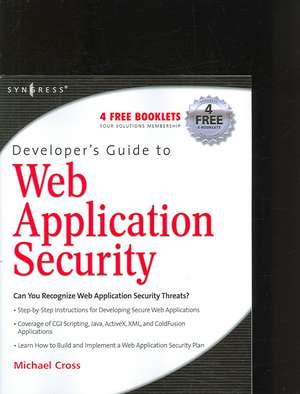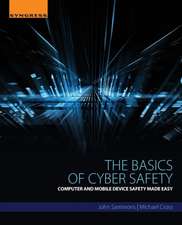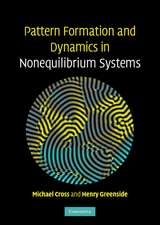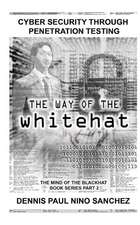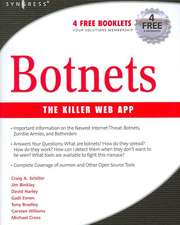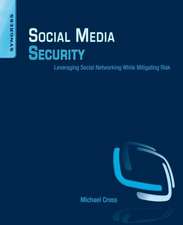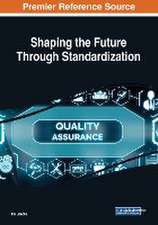Developer's Guide to Web Application Security
Autor Michael Crossen Limba Engleză Paperback – 15 feb 2007
This book defines Web application security, why it should be addressed earlier in the lifecycle in development and quality assurance, and how it differs from other types of Internet security. Additionally, the book examines the procedures and technologies that are essential to developing, penetration testing and releasing a secure Web application. Through a review of recent Web application breaches, the book will expose the prolific methods hackers use to execute Web attacks using common vulnerabilities such as SQL Injection, Cross-Site Scripting and Buffer Overflows in the application layer. By taking an in-depth look at the techniques hackers use to exploit Web applications, readers will be better equipped to protect confidential.
- The Yankee Group estimates the market for Web application-security products and services will grow to $1.74 billion by 2007 from $140 million in 2002
- Author Michael Cross is a highly sought after speaker who regularly delivers Web Application presentations at leading conferences including: Black Hat, TechnoSecurity, CanSec West, Shmoo Con, Information Security, RSA Conferences, and more
Preț: 376.01 lei
Preț vechi: 470.00 lei
-20% Nou
Puncte Express: 564
Preț estimativ în valută:
71.96€ • 78.14$ • 60.44£
71.96€ • 78.14$ • 60.44£
Carte tipărită la comandă
Livrare economică 22 aprilie-06 mai
Preluare comenzi: 021 569.72.76
Specificații
ISBN-13: 9781597490610
ISBN-10: 159749061X
Pagini: 500
Dimensiuni: 178 x 229 x 34 mm
Greutate: 0.67 kg
Editura: ELSEVIER SCIENCE
ISBN-10: 159749061X
Pagini: 500
Dimensiuni: 178 x 229 x 34 mm
Greutate: 0.67 kg
Editura: ELSEVIER SCIENCE
Public țintă
Network Security administrators, Developers, Penetration testers, Enterprise administrators, web developers and security expertsCuprins
1: Hacking Methodology
2: How to Avoid Becoming a Code Grinder
3: Understanding the Risk Associated with Mobile Code
4: Vulnerable CGI Scripts
5: Hacking Techniques and Tools
6: Code Auditing and Reverse Engineering
7: Securing Your Java Code
8: Securing XML
9: Building Safe ActiveX Internet Controls
10: Securing ColdFusion
11: Developing Security-Enabled Applications
12: Cradle to Grave: Working with a Security Plan
2: How to Avoid Becoming a Code Grinder
3: Understanding the Risk Associated with Mobile Code
4: Vulnerable CGI Scripts
5: Hacking Techniques and Tools
6: Code Auditing and Reverse Engineering
7: Securing Your Java Code
8: Securing XML
9: Building Safe ActiveX Internet Controls
10: Securing ColdFusion
11: Developing Security-Enabled Applications
12: Cradle to Grave: Working with a Security Plan
